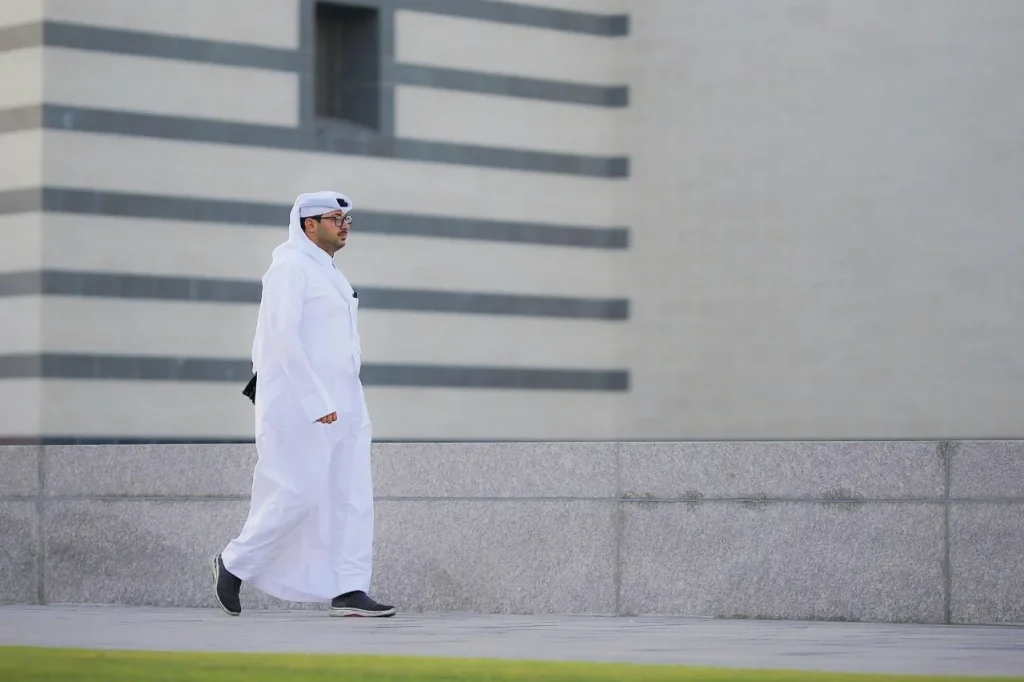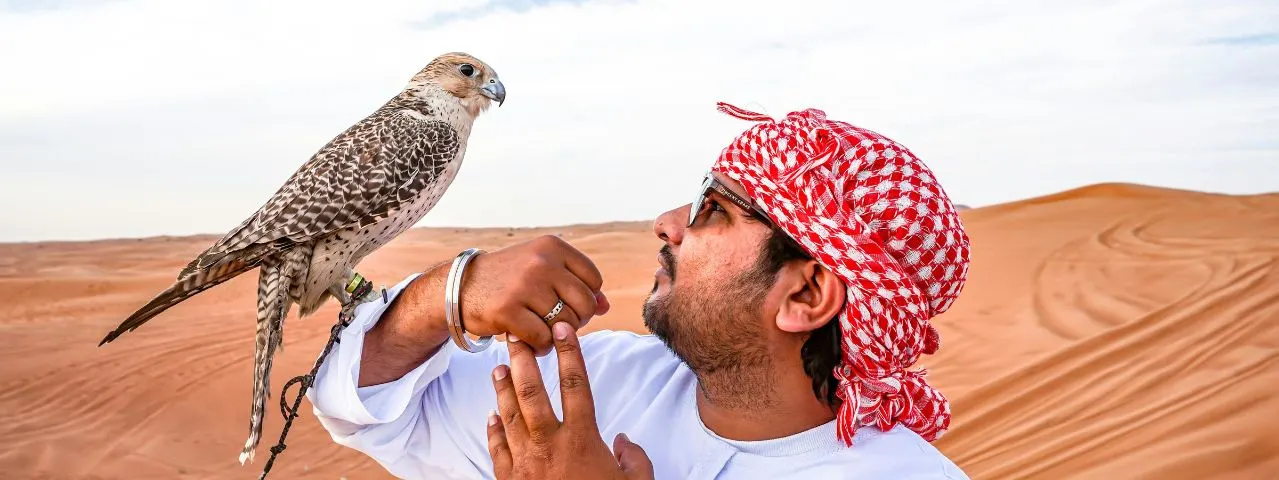Explore Dubai, one of the top desert destinations in the World. Though the Middle East region has progressed, Arabs take pride in maintaining their historical dress code. It is customary for citizens of the six Gulf Cooperation Council (GCC) nations – Bahrain, Qatar, Oman, United Aran Emirates, Saudi Arabia, and Kuwait to dress in traditional attire. The Arabic headscarf, known as the Ghutra, is worn by men in Arab countries. The Ghutra, often referred to as a Keffiyeh or Shemagh, is a symbol of national pride. Let us learn about the history of the Ghutra, explore its various styles and patterns, and different ways to wear this iconic headscarf.
Understanding the Ghutra
The Ghutra is a square piece of cloth, usually made from cotton. It is of white or red and white checkered pattern. The checks are arranged in a grid-like formation. In UAE, the Guthra is white with a black agal. This head dress is worn with a thobe.
History of Ghutra

The History of the Ghutra dates back to the pre-Islamic era. Bedouins used it to safeguard themselves from the heat and sandstorms while migrating from Saudi Arabia. Some believe it was worn by military personnel during the British Protectorate of the United Kingdom. The Guthra was made from goat or camel hair, and the Agal from twisted wool or camel hair.
A Step-by-Step Guide to Wearing the Ghutra -
Step 1: Select the Right Ghutra
Choose a Ghutra that suits the occasion. For a formal function, you can wear a white ghutra. The checkered Ghutra can be worn at an informal function (at a friend’s home).
Step 2: Fold the Ghutra
Lay the Ghutra flat on a surface and fold it into a triangle. Ensure that the edges are even to achieve a symmetrical look when worn.
Step 3: Place the Ghutra on the Head
Take the long part of the triangle-shaped Ghutra and bring it across your forehead, covering the top of your head.
Step 4: Secure the Sides
Take the two side corners of the Ghutra and bring them around to the back, overlapping them. Ensure the Ghutra lies flat and evenly on your head.
Step 5: Put the Agal
The Agal is a circular band that is placed above the ears to secure the Ghutra.
Step 6: Put the Agal
Check for symmetry and make any necessary adjustments. Ensure the Ghutra and the Agal is in place. The front edge of the Ghutra should sit comfortably across your forehead.
Step 7: Final Touches
Make any final adjustments to achieve the desired tightness and appearance. Ensure that the checks on the Ghutra are aligned and tidy.
Different Ghutra Styles
1) Cobra Style
Fold the Ghutra into a triangle and place the point at the back of your head. Iron it to achieve a crisp point at the forehead. Place the Agal to keep the point in place. To keep the Guthra in place, hold one end from the middle. Next, fold it to form the cobra hood’s first point. Repeat this on the other side. This style resembles the venomous reptile cobra.
2) Eagle Style
Allow the Ghutra to fall forward over your shoulders in the Eagle pose. Take one end and encircle the opposite shoulder from the front. Swing the side that is hanging over the shoulder to the opposite side.
3) The Teacher's Style
The Teacher style Ghutra is very simple. Wear the Ghutra with both ends down your back. Place the Agal to keep it secured in place.
Interesting Facts about Ghutra
1) Different regions and countries have variations in the design and color of the Ghutra.
2) Fashion designers and social media influencers have incorporated the Ghutra in their outfits.
3) The Ghutra protects against the sun, wind, and sand.
4) The number of twists in the Agal and the material used conveyed information about the wearer’s status. Leaders and chieftains often wore the Agal as a symbol of authority.
5) Agals are made of black cord.
6) The Ghutra is made of cotton, silk, and linen.
7) The Ghutra is worn in religious events and ceremonies.
Conclusion
The Ghutra serves as a mark of cultural pride, connecting individuals to their roots and the timeless traditions of the region. The cultural significance of the Ghutra extends beyond fashion, making it a meaningful and cherished accessory. Book desert safari Dubai tour package and let the desert winds whisper tales of tradition and thrill.
Frequently Asked Questions (FAQs):
1) Can women wear the Ghutra?
The Ghutra is usually worn by men. Women can use the Ghutra patterns in their attire, such as scarves.
2) In which countries is the Ghutra worn?
The Ghutra is worn in the UAE, Bahrain, Saudi Arabia, Kuwait, Iraq, Syria, Jordan, and Egypt.
3) Why is the Ghafiya worn underneath the Ghutra?
A white hat called a Ghafiya is worn below the Ghutra. It is worn to keep the head cool. The Ghafiya helps keep the Ghutra from sliding down the head.
4) Is wearing a Ghutra limited to locals?
Wearing a ghutra is not restricted to locals. Anyone can wear a Ghutra.

